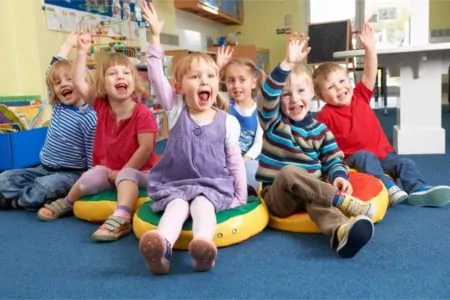If you grew up with older and younger siblings, you have likely heard of, or been accused of having, “Middle Child Syndrome.” This is the theory that being born in the middle of the pack shapes your personality, and not always for the better.
But how true is this theory? We dug into the official scientific findings to see if birth order really has consequences.
We gathered 20 interesting middle child facts and statistics. We cover personality traits, sibling dynamics, and real-life examples to help you understand the unique position of the middle child.
Key Takeaways
- Self-esteem struggles: Middle children often report lower self-esteem compared to firstborns or “babies” of the family.
- Social butterflies: To be heard, middle siblings tend to develop strong social skills and seek friendships outside the home.
- Natural leaders: Despite the stereotypes, over 50 percent of U.S. presidents were middle children.
- The peacemakers: Being sandwiched between siblings often forces middle children to become expert negotiators.
How Does Birth Order Impact a Child?
There is concrete evidence that birth order affects personality and psychology. For example, research suggests firstborns often possess a higher IQ (1).
Last-born children are statistically more likely to earn less than their siblings. This is especially true for female last-borns (2). When it comes to anxiety, only children tend to score higher than first, middle, or last-born children (3).
So, where does that leave the middle child? They are statistically more likely to struggle with self-esteem. Researchers attribute this to a perceived “lack of uniqueness” within the family unit (4).
Science confirms that birth order impacts children. However, it is not the only factor. Parenting styles, socioeconomic status, and education also play massive roles in development.
20 Middle Child Facts and Statistics
We are unpacking 20 fascinating facts about middle child energy. Let’s look at how birth order influences relationships, psychology, and adulthood.
Middle Child Personality Traits
Stereotypes suggest middle children are rebellious or less intelligent. However, the data tells a different story. Here are the concrete personality traits middle children typically share.
- They battle low self-esteem: Studies show middle-born children, especially males, often have lower self-esteem than their siblings. Theories suggest this stems from a lack of attention. Interestingly, they are not the most likely to experience depression; that statistic belongs to only children (5).
- They are natural peacemakers: Middle children naturally assume the role of mediator. They are sandwiched between the oldest and youngest, forcing them to negotiate peace between the two extremes (6).
- They fly under the radar: These siblings are often quieter than the rest of the family. The oldest sibling is usually strong-willed, and the youngest is the “baby” who demands attention. This leaves the middle child in a quieter observation role.
- They are highly sociable: Middle children often become outgoing adults. They learned early on that they must speak up and be social to be heard in a busy household.
- They make great leaders: While first-born children are often viewed as the leaders, middle children hold their own. In fact, 52 percent of U.S. presidents were middle children (7).
- They are perfectionists: One study found that middle children lean toward extreme perfectionism. This may be a coping mechanism to keep things within their control in a chaotic family dynamic.
- They are creative thinkers: Researchers claim middle children are more likely to be creative. The drawbacks they experience in childhood often force them to be empathetic and inventive to solve problems (8).
Sibling Dynamics and Parent Relationships
Does being stuck in the middle affect communication with parents? The research says yes. Here is what we know about the family dynamic.
- The attention gap: Middle children generally receive less direct attention than older or younger siblings. Experts link this lack of attention to peer-seeking behaviors, which can sometimes lead to delinquency issues (9).
- Competition and jealousy: Being the second or third child often fosters sibling rivalry. Siblings compete for limited parental resources. Over time, this competition can manifest as deep-seated jealousy.
- Risk-taking behaviors: Middle-borns are sometimes more risk-prone. They take extreme actions to gain parental attention. They want to stand out, so they become innovative or reckless (10).
- Parents may be more relaxed: Research states that parents are often warmer and less confrontational toward middle children. By the second child, parents are more confident in their abilities and less reactive than they were with the firstborn (11).
- They learn “adult” topics early: Younger and middle-born siblings often learn about sex earlier than firstborns. Older siblings tend to share details about sexual activity and relationships. This exposure is why younger siblings are statistically more likely to engage in sex at an earlier age.
- Struggle for belonging: When middle children feel squeezed, they struggle to find their place. This lack of belonging can impact their desire to socialize or form deep relationships later in life.
- They look outside the family: Middle children often seek their primary support system outside the home. Because they perceive a lack of support from parents, they place a high value on friendships and partners for validation.
Middle Child Stereotypes and Real-Life Examples
Let’s test the theories against reality. Here are common middle-child stereotypes and the famous people who prove (or disprove) them.
- The Rebel: The idea that middle children are rebellious has some weight. Evidence suggests they are more likely to be delinquents. Susan B. Anthony, a middle child of seven, was a rebel in the best way (12). As a suffragette, she was arrested at age 52 for voting illegally in the 1872 presidential election.
- The Mediator: Middle children prioritize peace. Model Bella Hadid claims she feels like the typical middle child because she always keeps the peace and ensures everyone is satisfied (13).
- The Connector: Middle-borns value connection. Mark Zuckerberg, the founder of Facebook, is a middle child. It makes sense that a middle child would invent the world’s largest platform for social connection.
- The Independent Spirit: Middle children learn self-reliance early. Bill Gates, a co-founder of Microsoft, is incredibly independent. He dropped out of Harvard to launch Microsoft, beginning his journey to billionaire status (14).
- The Hothead: Some stereotypes suggest middle children have anger issues because they had to fight for attention. Conor McGregor, a professional fighter, fits this bill. In 2018, he attacked a UFC bus in a rage, injuring two other fighters (15).
- The Showman: Middle children often do outrageous things to stand out. Many celebrities fit this mold, including Jennifer Lopez, Michael Jordan, Miley Cyrus, and Katy Perry.






